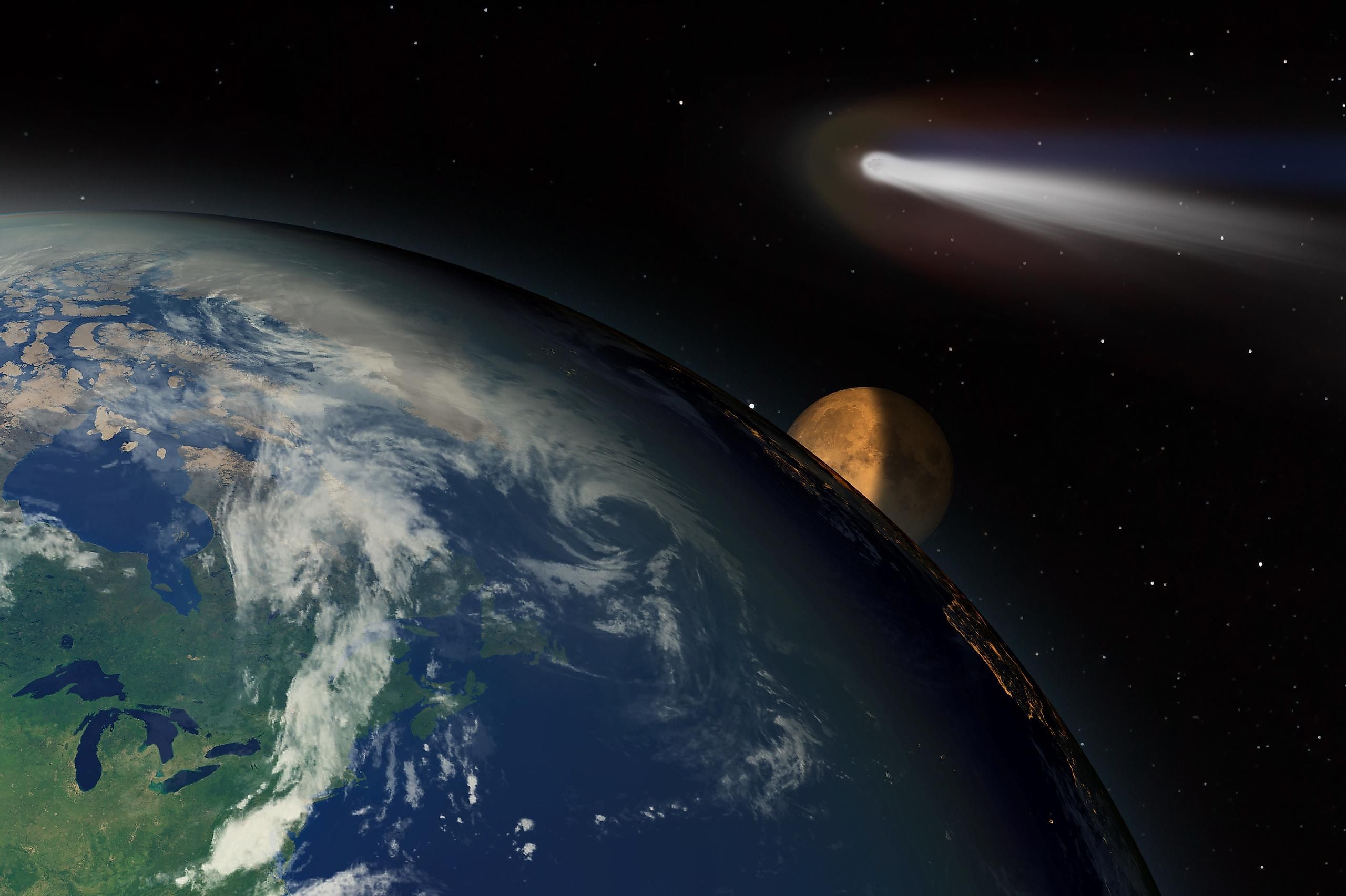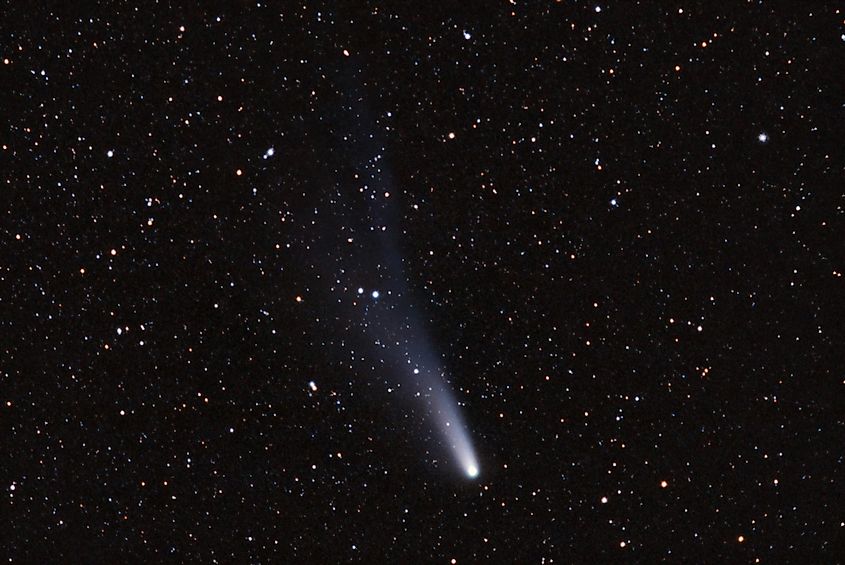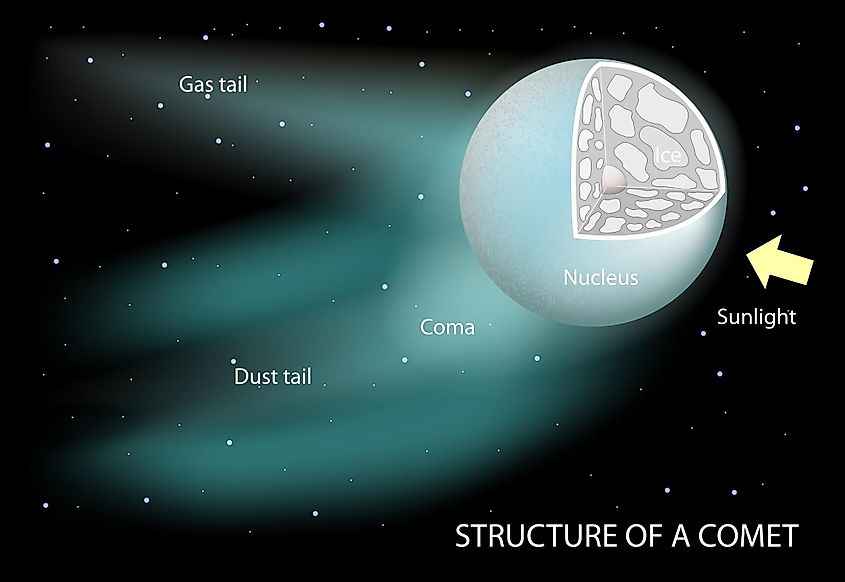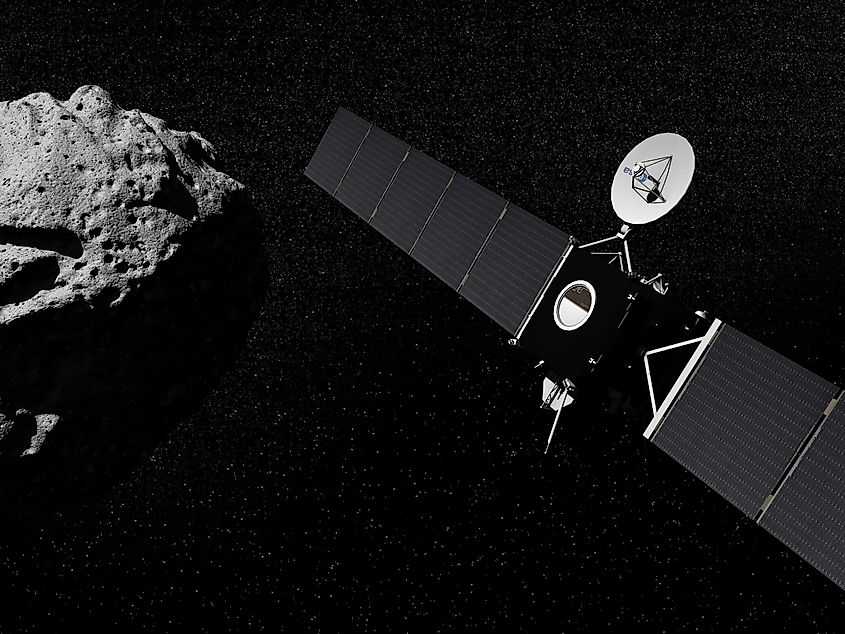
Comets
Every now and again, the Earth is graced by the presence of a comet. On average, one comet is visible to the naked eye every year, yet most of them are small and dim, indistinguishable from a distant star. However, on rare occasions, a large comet passes close enough to become one of nature's most spectacular sights. Comets are large bodies of ice and rock, and although they have some similarities to other objects such as asteroids and meteors, they are also quite different.
Comets have played an interesting role in human history. Before the invention of the telescope, humans had no way of actually studying comets in detail, so they were generally perceived as acts of a god or gods. Generally, comets were seen as warning signs. For example, a comet in 1618 caused mass panic across Europe, with many predicting that the comet was a sign that Judgment Day was at hand. People generally associated random natural disasters with comets, believing that when a comet passed by, it resulted in floods, earthquakes, and disease. Even after the telescope became a widely used instrument, people still viewed comets as omens for disaster. The passing of Halley's Comet in 1910 caused mass panic, with people panicking and buying things like gas masks and alternative medicines marketed around comets. Thankfully, scientific advancement has vastly improved our understanding of comets. They are no longer viewed as terrible omens. Instead, we now appreciate them for the beautiful and rare events that they are.
Characteristics Of Comets

A comet is defined by several factors: where it originated, its composition, and its physical structure. Most asteroids form close to the inner solar system, generally between Mars and Jupiter's orbits. Comets, however, originate in the far outer regions of the solar system, either in the Kuiper Belt or the Oort Cloud. Since asteroids originate closer to the sun, where temperatures are warmer, they contain very low amounts of ice. Instead, asteroids are usually composed of various rocks and metals. Since comets originate in the outer solar system, they are primarily composed of various ices such as water, methane, and ammonia.
Comets come in two different types: short-period comets and long-period comets. As their names suggest, a comet's type is dependent on how long it takes for the comet to orbit the sun, which in turn is dependent on whether the comet originated in the Kuiper Belt or the Oort Cloud. The Kuiper Belt is far closer to the sun than the Oort Cloud, existing just outside the orbit of Neptune. Short-period comets originate within the Kuiper Belt, and most of them will likely remain there virtually forever. Occasionally, the gravitational pull of Neptune will pull on some comets, sending them on a trajectory towards the inner solar system. Short-period comets generally take less than 200 years to orbit the sun. Perhaps the most famous short-period comet is Halley's Comet, which takes about 76 years to orbit the sun. Long-period comets originate in the Oort Cloud, and they can take many thousands to even millions of years to orbit the sun. Since the Oort Cloud is so far away from all planets, their gravitational pull has little effect on far away comets. For long-period comets to find themselves on a trajectory towards the inner solar system, something must disturb their orbits. Generally, the gravitational disturbance comes from another star. The sun is currently moving through the Milky Way, and occasionally, it happens to pass by another star system. The gravitational pull of a close star will disrupt the orbits of some comets, sending them on a trajectory towards the sun.
Every comet has one thing in common that sets them apart from other objects in the solar system: a broad, elliptical orbit. Although everything orbits in an ellipse, comets tend to have highly elliptical orbits, so they have such long orbital periods. Their orbits can carry them from the regions beyond Neptune to a distance closer to the sun than the Earth. Comets indeed are space travelers.
Physical Structure Of Comets

Every comet has three primary physical characteristics: a nucleus, a coma, and a tail. The nucleus of a comet is its solid core, generally composed of rock, dust, and various ices. As a comet moves towards the inner solar system, it will receive a higher dose of solar radiation, which in turn warms the comet's nucleus and causes some of the ice on its surface to become gaseous. This will create a type of atmosphere around the comet called the coma. The comet's tail is formed directly from the coma, wherein solar radiation pushes the coma behind the comet, creating a gigantic tail of dust and ice. Generally, the tail will point in the opposite direction of the sun.
Exploration Of Comets

There are over 4,000 known comets in the solar system, yet that likely only represents a fraction of the billions estimated to exist. To date, there have been several successful missions to comets. Most have been flybys, while one has impacted a comet's surface and another landed upon the surface of a comet. The first spacecraft to successfully impact a comet was NASA's Deep Impact spacecraft, launched in 2005. Deep Impact was launched to study the comet Tempel 1. Upon arrival, Deep Impact sent an impactor to the comet's surface, creating an impact crater and sending debris into space. This impact allowed scientists to study the ejected material and the interior of the comet. In 2004, the European Space Agency launched the Rosetta spacecraft on a mission to the comet 67P/Churyumov–Gerasimenko. Rosetta was equipped with a lander, and in 2014, it became the first spacecraft to land on the surface of a comet successfully. Unfortunately, the lander happened to touch down in a shaded area, so it could not receive a sufficient amount of solar power. After only two days, the lander lost most of its power. Future attempts at communicating with the lander were briefly successful, yet communication was turned off in 2016.
Comet Terms And Definitions
| Term | Definition/Explanation |
|---|---|
|
Nucleus |
the central region of a comet, defined as the comet’s surface |
|
Coma |
The atmosphere of a comet, generally produced by the interaction between surface material and solar radiation |
|
Tail |
The tail of a comet is produced as solar radiation pushed the coma away from the comet, forming a long tail that usually points in the opposite direction of the sun |
|
Short-period comet |
A comet whose orbital path takes it around the sun in less than 200 hundred years. These comets generally originate in the Kuiper Belt |
|
Long-period comets |
Comets whose orbital period can take many millions of years. These comets generally originate in the Oort Cloud |











